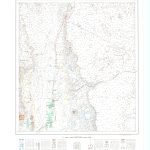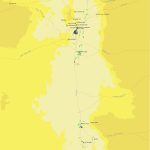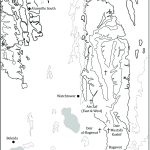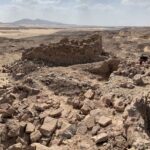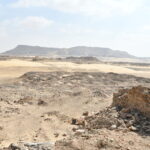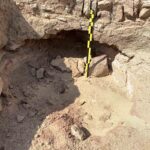ǦABAL ṬĀRIF
| Arabic | جبل طارف |
| DEChriM ID | 59 |
| Trismegistos GeoID | 61705 |
| Pleiades ID | - | PAThs ID | - |
| Ancient name | - |
| Modern name | Ǧabal Ṭārif |
| Latitude | 25.554473 |
| Longitude | 30.525980 |
| Date from | 150 |
| Date to | 425 |
| Typology | Quarry |
| Dating criteria | Radiocarbon dating; ceramic analysis. |
| Description | This is a particularly obscure site of which very little is known. Until recently, it had only been mentioned briefly in two publications, in which it is referred to simply as the ‘Stone Church’ (Warner 2018, fig. 409 and fig. 415; Ikram et al. 2020: 323-324). A monographic article published in 2021 provides a more detailed description of the site and of the surface pottery identified by the North Kharga Oasis Survey (NKOS). The archaeological area was identified by NKOS in 2011 and mapped by N. Warner (Warner 2018: 481). It is located in the north of Wādī al-Baǧawāt, to the north-east of the cluster of monasteries built around Ǧabal al-Ṭayr (ʿAyn Ǧallāl, ʿAyn Saʿaf East, Dayr al-Baǧawāt and Dayr Muṣṭafā Kāšif), in the Ǧabal Ṭārif, along the trajectory of a western deviation of the Darb al-Arbaʿīn, which continues north to Umm al-Dabādīb. The area in which the site is situated is currently ‒ and was perhaps also in antiquity ‒ an alum and sandstone quarry. Identifiable on the ground are: a church made of limestone rubble and some associated structures, both built and semi-excavated in the substrate, as well as a number of tombs and caves in the surrounding hills. Additionally, there are numerous craters throughout the area, particularly to the east of the church, which are perhaps pit burials, as well as at least one tomb dug into the gebel, in the flat area to the south of the church. In the same sector, a few meters to further south of this pit, there is a north-south oriented semi-excavated space, the western wall of which is constructed from large stone blocks, while the easten wall is cut into the geological substrate. |
| Archaeological research | The site was surveyed in 2011 and 2013 by the North Kharga Oasis Survey. It has only been described recently (Ikram et al. 2021), and it has never been excavated. Members of the DEChriM team and of the local SCA Inspectorate conducted a surface analysis of pottery in February 2021 and photographed the church for photogrammetric modelling. |
• Ikram, S., G. Tallet and N. Warner. 2020. “A Mineral for All Seasons: Alum in the Great Oasis.” In Dust, Demons and Pots. Studies in Honour of Colin A. Hope, edited by A. Warfe, J. C. R. Gill, C. R. Hamilton, A. K. Pettman and D. A. Stewart, 317-333. Leuven, Paris, Bristol: Peeters.
• Ikram, S., N. Warner, N. Lazaridis, L. A. Warden, R. Cook, C. Boyer and J. Bunbury. 2021. “A “Late Antique” Mining Community in the North Kharga Oasis (Egypt).” Journal of the American Research Center in Egypt 57: 123-153.
• Warner, N. 2018. “Christian Architecture in North Kharga.” In North Kharga Oasis Survey. Explorations in Egypt’s Western Desert, edited by C. Rossi and S. Ikram, 479-493. Leuven, Paris, Bristol: Peeters.


 Json data
Json data